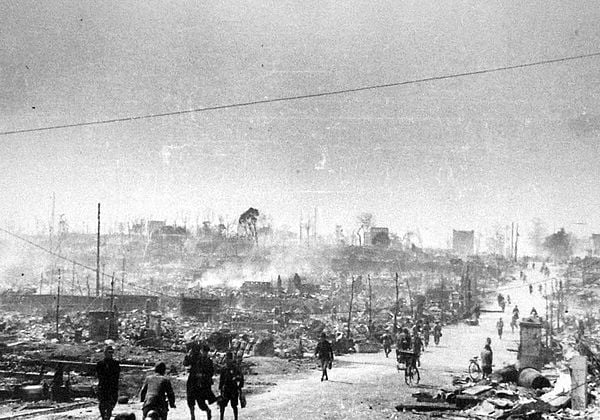There have been several bombings and air attacks in the world throughout history. This especially is true during the World Wars. But did you know when did the most destructive air attack happen?
On March 10, 1945, American bombers began a new bombing campaign against Japan, unleashing 2,000 tons of incendiary bombs on Tokyo. This was the biggest single firestorm in recorded history, about 16 square miles of land in and around Tokyo were burnt, killing around 130,000 Japanese civilians.
What Happened During the Attack?
On the Mariana Islands of Tinian and Saipan, the Air Force crew assembled for a military briefing on March 9, 1945. They planned a low-level bombing strike on Tokyo for that evening, but with one catch: their planes would be stripped of all guns except the tail turret.
The lighter weight of the planes would boost the speed of each Superfortress bomber, as well as its bomb load capacity. This would increase by 65%, allowing each plane to carry more than seven tons of bombs.
The aircrew were told that if they were shot down, they should make all haste for the water, which would boost their chances of being picked up by American rescue teams. If they landed in Japanese territory, residents would treat them as if they were a threat. The mission that night would result in the deaths of tens of thousands of those same civilians.
The cluster bombing of Shitamachi, a Tokyo suburb, had only been approved a few hours before. Shitamachi had a population of about 750,000 people who lived in crowded wooden-frame buildings.
Setting fire to this paper city was a form of test of firebombing effects, as well as a way to destroy the light industries, known as shadow factories, that manufactured prefabricated war materials for Japanese aircraft companies.
Shitamachi’s residents never got a chance to defend themselves. Their fire departments were severely understaffed, poorly trained, and underequipped. Superfortress B-29 bombers took off from Saipan and Tinian at 5:34 PM, arriving at their target at 12:15 AM on March 10, 1945. At the height of 500 feet, 334 bombers dropped their payload, igniting a massive bonfire driven by 30-knot winds that helped raze Shitamachi and spread the flames throughout Tokyo.
Thousands of terrified Japanese civilians attempted but failed to flee the raging fire. The bomber pilots were forced to use air masks to avoid vomiting due to the blood-red mists and stench of burnt flesh that floated above.
The raid lasted about three hours and a half. Countless bodies were drifting in the black Sumida River, clothed and nude, all black as charcoal. It was surreal, one doctor on the scene said. (Source: Firebombing Tokyo)
Remembrance of horrific Air Attack
The bodies of those who had been interred in mass graves were exhumed and burned after the war. The ashes were deposited in a charnel house in Sumida’s Yokoamicho Park, which had been built to retain the remains of 58,000 earthquake victims from 1923.
(Source: Public Memory Tokyo Air Raids)
